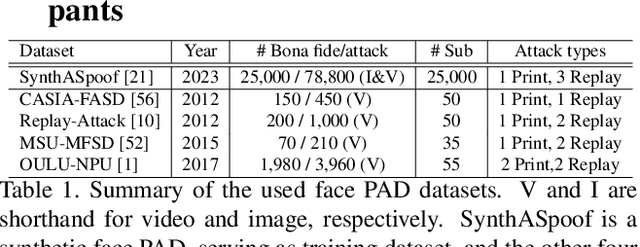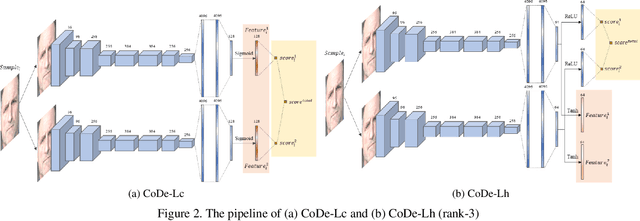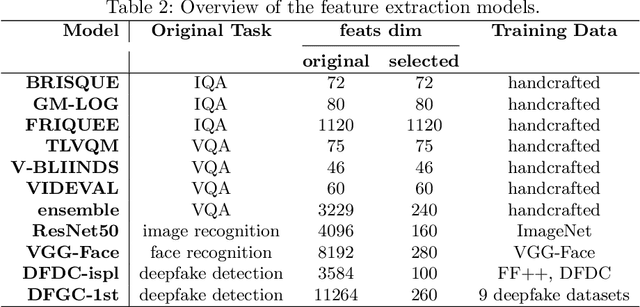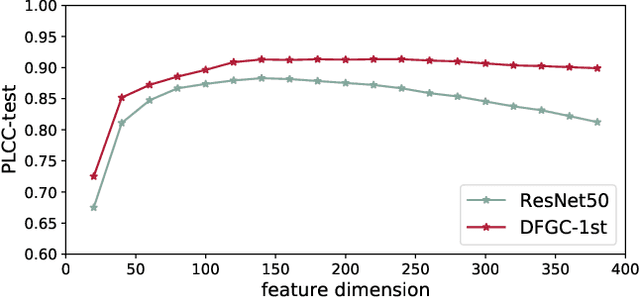Xianyun Sun
SynFacePAD 2023: Competition on Face Presentation Attack Detection Based on Privacy-aware Synthetic Training Data
Nov 09, 2023



Abstract:This paper presents a summary of the Competition on Face Presentation Attack Detection Based on Privacy-aware Synthetic Training Data (SynFacePAD 2023) held at the 2023 International Joint Conference on Biometrics (IJCB 2023). The competition attracted a total of 8 participating teams with valid submissions from academia and industry. The competition aimed to motivate and attract solutions that target detecting face presentation attacks while considering synthetic-based training data motivated by privacy, legal and ethical concerns associated with personal data. To achieve that, the training data used by the participants was limited to synthetic data provided by the organizers. The submitted solutions presented innovations and novel approaches that led to outperforming the considered baseline in the investigated benchmarks.
Iris Liveness Detection Competition (LivDet-Iris) -- The 2023 Edition
Oct 06, 2023



Abstract:This paper describes the results of the 2023 edition of the ''LivDet'' series of iris presentation attack detection (PAD) competitions. New elements in this fifth competition include (1) GAN-generated iris images as a category of presentation attack instruments (PAI), and (2) an evaluation of human accuracy at detecting PAI as a reference benchmark. Clarkson University and the University of Notre Dame contributed image datasets for the competition, composed of samples representing seven different PAI categories, as well as baseline PAD algorithms. Fraunhofer IGD, Beijing University of Civil Engineering and Architecture, and Hochschule Darmstadt contributed results for a total of eight PAD algorithms to the competition. Accuracy results are analyzed by different PAI types, and compared to human accuracy. Overall, the Fraunhofer IGD algorithm, using an attention-based pixel-wise binary supervision network, showed the best-weighted accuracy results (average classification error rate of 37.31%), while the Beijing University of Civil Engineering and Architecture's algorithm won when equal weights for each PAI were given (average classification rate of 22.15%). These results suggest that iris PAD is still a challenging problem.
Visual Realism Assessment for Face-swap Videos
Feb 02, 2023



Abstract:Deep-learning based face-swap videos, also known as deep fakes, are becoming more and more realistic and deceiving. The malicious usage of these face-swap videos has caused wide concerns. The research community has been focusing on the automatic detection of these fake videos, but the as sessment of their visual realism, as perceived by human eyes, is still an unexplored dimension. Visual realism assessment, or VRA, is essential for assessing the potential impact that may be brought by a specific face-swap video, and it is also important as a quality assessment metric to compare different face-swap methods. In this paper, we make a small step to wards this new VRA direction by building a benchmark for evaluating the effectiveness of different automatic VRA models, which range from using traditional hand-crafted features to different kinds of deep-learning features. The evaluations are based on a recent competition dataset named as DFGC 2022, which contains 1400 diverse face-swap videos that are annotated with Mean Opinion Scores (MOS) on visual realism. Comprehensive experiment results using 11 models and 3 protocols are shown and discussed. We demonstrate the feasibility of devising effective VRA models for assessing face-swap videos and methods. The particular usefulness of existing deepfake detection features for VRA is also noted. The code and benchmark will be made publicly available.
 Add to Chrome
Add to Chrome Add to Firefox
Add to Firefox Add to Edge
Add to Edge